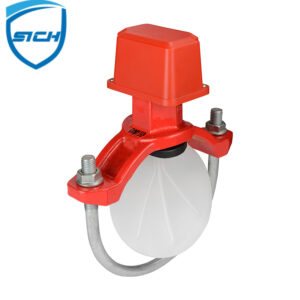Zone Control Valve A zone control valve is a switch that is part of the water supply or fire protection system in a building. This system includes landing valves, water storage tanks, and sprinkler systems. The main purpose of this particular valve is to regulate the flow of water into specific “zones” or areas; consequently, it is also referred to as zone control valve especially when installed according to floors or levels within buildings.
Zone Control Valve is a safety feature, designed to separate an area for maintenance purposes. This system displays the indication of fire zone when connected with a Butterfly valve, Flow Switch, Pressure Gauge, and Test & Drain Valves. The Zone Control Valves are designed for reliability and are made with the highest quality available. They are used to create and control individual zones or isolate equipment in hydronic heating Systems.
The manufacturer made sure Zones Control Valves were reliable and made high-quality. These valves are designed for controlling individual zones or isolating equipment in a hydronic heating system. Home hydronic systems usually have electric zone valves. In large commercial installations, vacuum or compressed air can be utilized instead. The motor is typically attached to the water valve by means of a mechanical coupling.
Electrical zone valves usually use a small shaded-pole synchronous motor in combination with a rotary switch. This switch disconnects the motor at any of two stopping points known as ‘valve open’ and ‘valve closed’. When power is applied to the terminal marked ‘open valve’, the motor will run until the valve is entirely open. On the other hand if power is applied at the terminal marked ‘close valve’ then this will be reversed and the valve closed similarly. This particular motor runs off 24 volts ac just like every other component within such systems does therefore enabling the valves to be controlled by low voltage thermostats directly as well as wired with low voltage thermostat wiring.This kind of valve requires an SPDT thermostat or relay to operate fully well.”
Wax motors and a spring-return mechanism are materials that can also be used to create valves within a zone. These valves are shut using a spring-based system as it is actually the opposite for wax motors which use a spring motor to close them. For effective operation of the said valve require that there be electricity connected since this causes the valve to re-close immediately after disconnecting power. When it comes to its operation, any basic SPST thermostat may suffice here!
When a thermostat detects a need for heating, it usually turns a vacuum or pressure on or off. This leads to the displacement of a spring-loaded rubber diaphragm causing the valve to open or close. This process is unlike that of the electrically operated zone valve which will not return to its position unless acted upon by power. In addition they are set in such a way that by default they remain open hence allowing the flow of heat.


Leave a Reply